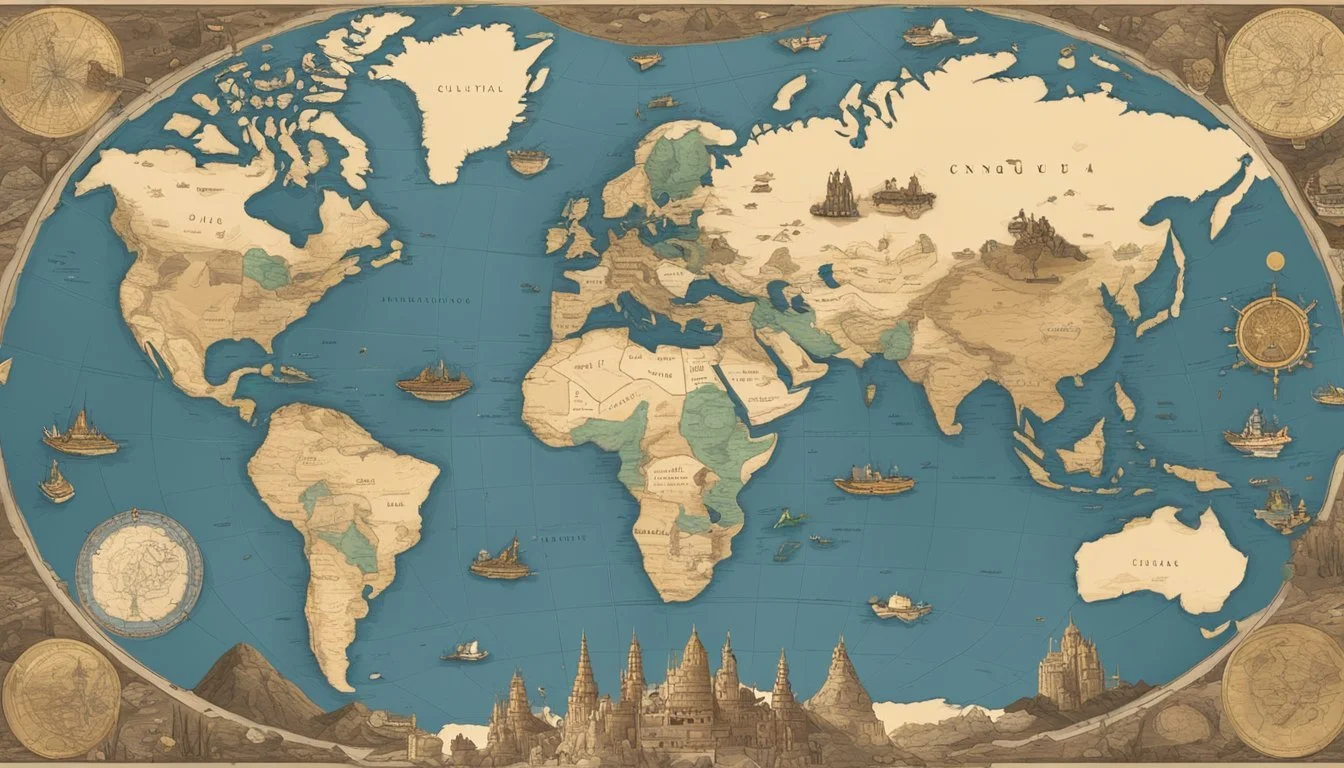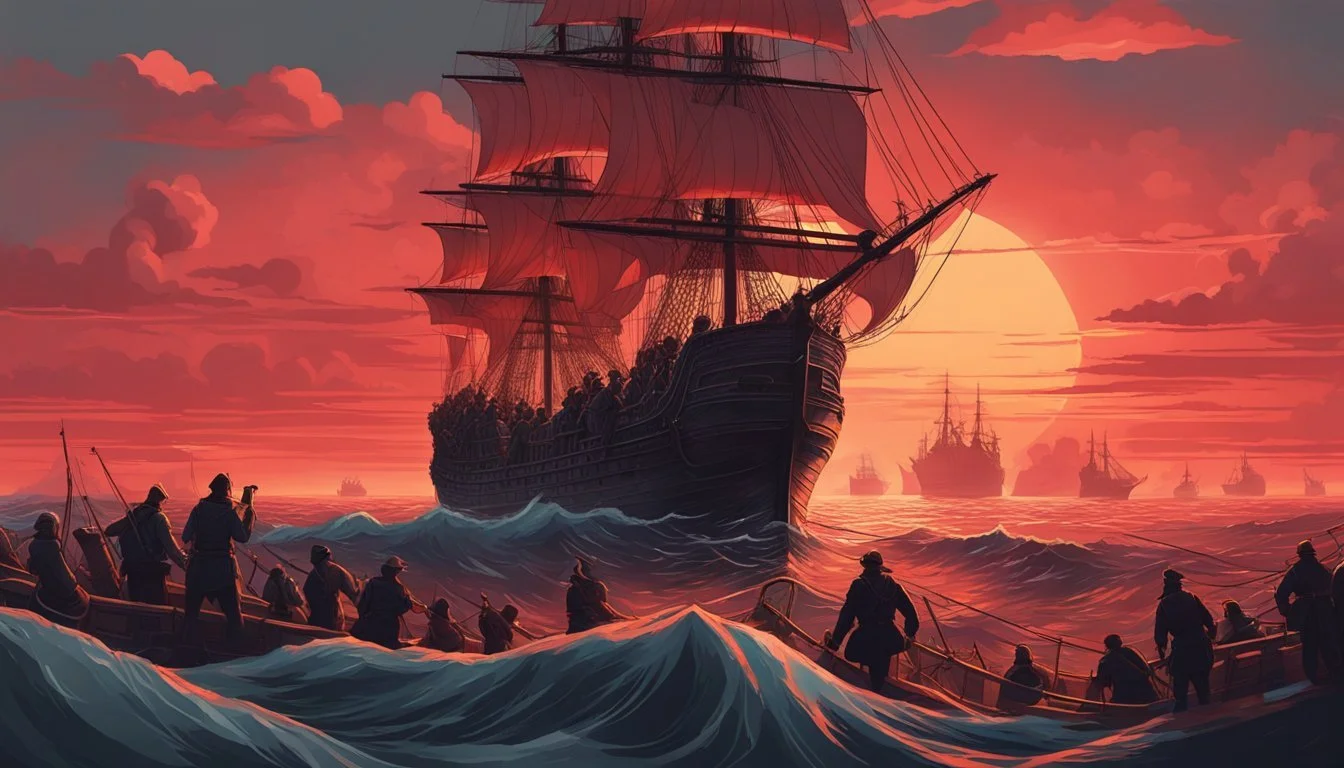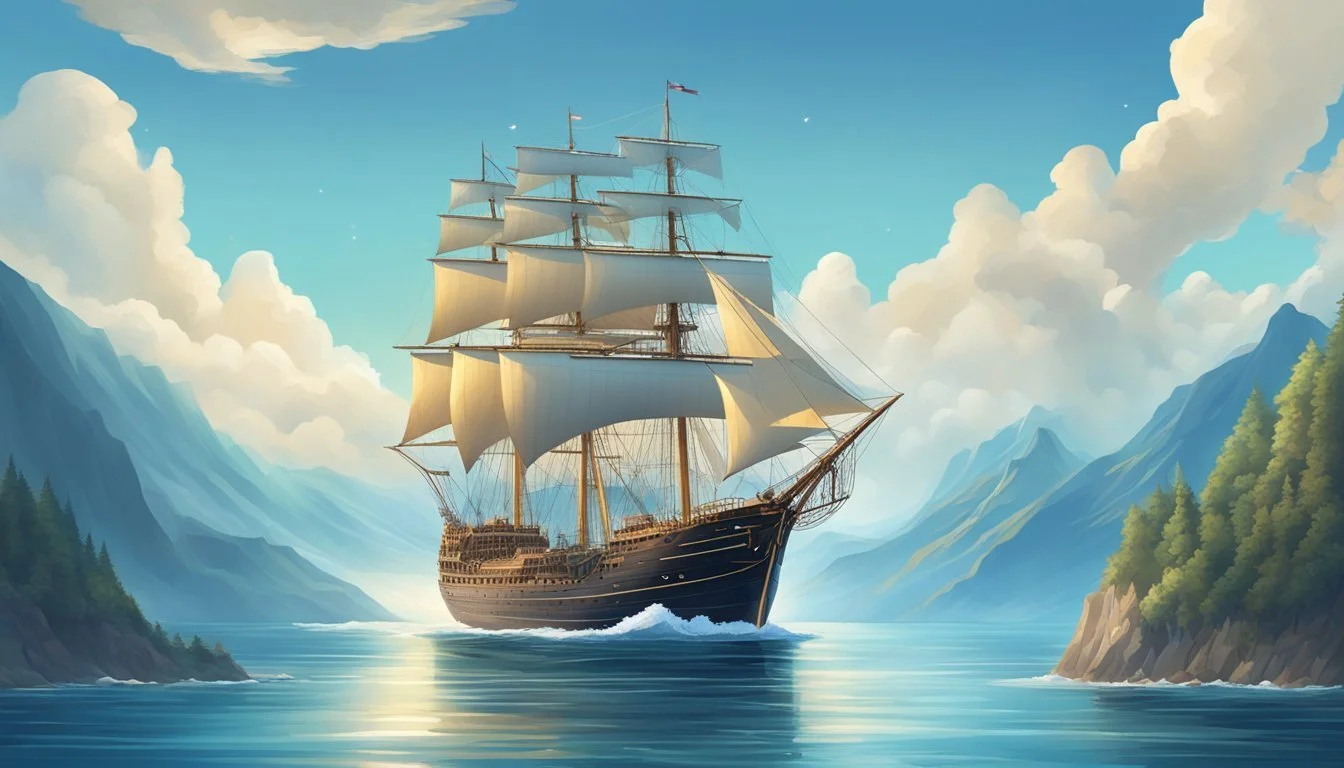10 Documentaries on the Age of Exploration and its Global Consequences
Unveiling the Impact of European Voyages
The Age of Exploration was a pivotal period in world history, spanning from the 15th to the 17th century. European powers embarked on ambitious maritime voyages, seeking new trade routes, territories, and resources across the globe. These expeditions led to unprecedented cultural exchanges, scientific advancements, and economic shifts that continue to shape our world today.
Documentaries offer a compelling way to explore this transformative era and its lasting impact on global society. Through a combination of historical analysis, expert interviews, and visual storytelling, these films bring the Age of Exploration to life, shedding light on its complex legacy of discovery, conquest, and cultural interchange. By examining ten such documentaries, viewers can gain a deeper understanding of this crucial period and its far-reaching consequences.
1) "The Age of Exploration: Impacting the World" by Explorer Films
"The Age of Exploration: Impacting the World" offers a comprehensive look at the far-reaching effects of European exploration from the 15th to 17th centuries. The documentary examines how these voyages reshaped global politics, economics, and cultural landscapes.
Through expert interviews and historical reenactments, the film highlights key figures like Christopher Columbus, Vasco da Gama, and Ferdinand Magellan. It explores their motivations and the technologies that made their journeys possible.
The documentary delves into the establishment of trade routes and colonial empires. It shows how these developments led to the exchange of goods, ideas, and people on an unprecedented scale.
"The Age of Exploration" doesn't shy away from the negative consequences of this era. It addresses the exploitation of indigenous populations and the devastating impact of disease on the Americas.
The film also examines how exploration influenced scientific knowledge, cartography, and navigation techniques. It demonstrates how these advancements paved the way for future discoveries and global connections.
2) "Sailing into the Unknown: Discovery and Impact" from GlobeDocs
"Sailing into the Unknown: Discovery and Impact" is a captivating documentary from GlobeDocs that explores the Age of Exploration. The film takes viewers on a journey through the perilous voyages of 15th and 16th-century explorers.
It highlights the motivations behind these expeditions, including the search for new trade routes and the desire for wealth and power. The documentary examines the technological advancements in shipbuilding and navigation that made these voyages possible.
The film also delves into the consequences of these explorations on indigenous populations. It presents a balanced view of the cultural exchanges and conflicts that arose from these encounters.
"Sailing into the Unknown" features interviews with historians and archaeologists who provide expert insights. The documentary uses historical reenactments and archival footage to bring the era to life.
The film examines the long-term impacts of the Age of Exploration on global trade, cultural exchange, and the spread of ideas. It offers a thought-provoking look at how these voyages shaped the modern world.
3) "Colonial Encounters and Their Legacies" by Insight Pictures
This documentary examines the lasting impacts of European colonization on indigenous peoples and cultures worldwide. It explores how initial encounters between colonizers and native populations shaped power dynamics and societal structures.
The film presents historical accounts and modern-day testimonies to illustrate the ongoing effects of colonial policies. It highlights how land seizures, forced assimilation, and resource exploitation disrupted traditional ways of life.
Archival footage and expert interviews provide context on the economic motivations behind colonialism. The documentary also addresses how colonial-era racial hierarchies continue to influence social inequalities in many post-colonial nations today.
Case studies from Africa, Asia, and the Americas demonstrate similarities and differences in colonial experiences across regions. The film analyzes how colonial legacies affect contemporary issues like economic development, political stability, and cultural identity.
"Colonial Encounters and Their Legacies" offers a balanced look at both the destructive and transformative aspects of colonialism's global reach. It encourages viewers to critically examine the complex historical roots of current geopolitical realities.
4) "Navigators of the New World" directed by Channel Journey
"Navigators of the New World" explores the daring expeditions of European explorers during the Age of Discovery. The documentary focuses on key figures who charted unknown territories and opened up new trade routes.
The film highlights the voyages of Christopher Columbus, Vasco da Gama, and Ferdinand Magellan. It examines their motivations, challenges, and the lasting impact of their discoveries on global trade and cultural exchange.
Channel Journey's production uses a combination of expert interviews, historical reenactments, and archival footage to bring these journeys to life. The documentary also touches on the navigational techniques and technologies used by these explorers.
The film addresses the consequences of these expeditions on indigenous populations in the Americas and other newly contacted regions. It presents a balanced view of the explorers' achievements and the negative impacts of colonization.
"Navigators of the New World" provides insight into the economic and political forces driving European expansion during this period. It examines how these voyages reshaped the world map and transformed global power dynamics.
5) "Global Trade Routes Established: The Good and The Bad" by Trade Films
This documentary examines the complex effects of global trade routes established during the Age of Exploration. It highlights how these routes connected distant regions and facilitated the exchange of goods, ideas, and cultures.
The film explores the economic benefits brought by new trade networks. It showcases how European nations gained access to valuable spices, textiles, and precious metals from Asia and the Americas.
Trade Films also addresses the negative consequences of these routes. The documentary discusses the spread of diseases between continents and the exploitation of indigenous populations.
The film examines the role of trade routes in the growth of colonial empires. It illustrates how European powers used these networks to expand their influence and control over distant territories.
"Global Trade Routes Established" presents a balanced view of the long-term impacts on global economies and societies. It offers insights into how these historical trade paths continue to shape modern international commerce and cultural exchange.
6) "Imperial Conquests and Their Cultural Echoes" by Historic Views
"Imperial Conquests and Their Cultural Echoes" explores the far-reaching impacts of European expansion during the Age of Exploration. This documentary examines how colonialism shaped global cultures and societies.
The film analyzes the complex relationships between colonizers and indigenous populations. It presents historical accounts and expert interviews to illustrate the cultural exchanges that occurred.
Viewers learn about the introduction of European languages, religions, and customs to colonized regions. The documentary also highlights how local traditions influenced European art, music, and cuisine.
"Imperial Conquests" examines the lasting effects of colonial rule on modern geopolitics. It discusses how imperial borders continue to influence current national boundaries and conflicts.
The film features archival footage and reenactments to bring historical events to life. It offers a balanced perspective on the Age of Exploration's legacy, acknowledging both positive and negative consequences.
Through its comprehensive approach, "Imperial Conquests and Their Cultural Echoes" provides viewers with a deeper understanding of how past imperial ambitions continue to shape our world today.
7) "The Columbian Exchange: Foods, Diseases, and Beyond" by NatureDocs
This documentary explores the far-reaching impacts of Christopher Columbus's voyages to the Americas. It examines the exchange of plants, animals, and microorganisms between the Old and New Worlds.
The film highlights how staple crops like potatoes, tomatoes, and corn transformed European diets and agriculture. It also discusses the introduction of livestock such as horses and cattle to the Americas.
NatureDocs presents a balanced view of the exchange's consequences. The documentary covers the devastating effects of European diseases on Native American populations, which lacked immunity to these pathogens.
The film examines how new food sources led to population growth in some regions while causing economic shifts in others. It also touches on the transfer of cultural practices and ideas between continents.
Experts in the documentary explain how the Columbian Exchange reshaped ecosystems on both sides of the Atlantic. The introduction of new species often had unforeseen effects on local environments.
Through interviews and historical reenactments, the film brings to life the complex web of interactions that followed Columbus's journeys. It demonstrates how this biological and cultural exchange continues to influence our world today.
8) "Mapping the World: Cartography's Role in Exploration" from MapMakers Media
This documentary explores the crucial role of cartography in the Age of Exploration. It traces the evolution of mapmaking techniques from the 15th to 17th centuries, highlighting how advances in cartography enabled and drove global exploration.
The film showcases rare historical maps and interviews with cartography experts. It examines how early explorers like Columbus and Magellan relied on maps to navigate uncharted waters and discover new lands.
"Mapping the World" delves into the political and economic implications of cartography during this era. It reveals how maps became powerful tools for European nations to claim territories and establish trade routes.
The documentary also addresses the cultural impact of new cartographic knowledge. It illustrates how maps gradually reshaped European understanding of world geography and challenged long-held beliefs about the Earth's layout.
Viewers gain insight into the technical challenges faced by cartographers of the time. The film demonstrates the methods used to calculate longitude and latitude, and how mapmakers incorporated new information from returning explorers.
"Mapping the World" presents a compelling narrative of how cartography and exploration evolved in tandem, each driving the other forward in an era of unprecedented global discovery.
9) "The Spice Trade and its Far-Reaching Impacts" by Flavor Films
"The Spice Trade and its Far-Reaching Impacts" explores the global consequences of the spice trade during the Age of Exploration. The documentary examines how the pursuit of exotic spices shaped world history and transformed economies.
Flavor Films presents viewers with stunning visuals of spice-producing regions, from the Moluccas to the Indian subcontinent. The film details how European powers competed for control of these lucrative trade routes.
Experts discuss the economic impact of the spice trade, which fueled the growth of maritime empires and international commerce. The documentary highlights how spices like nutmeg, cloves, and pepper became valuable commodities, driving exploration and colonization.
The film also addresses the cultural exchange that occurred as a result of the spice trade. It explores how the movement of goods facilitated the spread of ideas, technologies, and cuisines across continents.
"The Spice Trade and its Far-Reaching Impacts" doesn't shy away from the darker aspects of this era. It examines the exploitation of local populations and the environmental changes brought about by intensive spice cultivation.
10) "The Slave Trade's Indelible Legacy" documented by Truth Pics
"The Slave Trade's Indelible Legacy" offers a stark examination of the transatlantic slave trade's lasting impact. This documentary by Truth Pics explores how the forced migration of millions of Africans shaped modern societies.
The film presents historical records and expert interviews to illustrate the scale of the slave trade. It highlights the economic, social, and cultural consequences that persist to this day.
Archival footage and contemporary scenes demonstrate the ongoing effects of slavery in both Africa and the Americas. The documentary examines disparities in wealth, education, and social status that can be traced back to this dark period.
Truth Pics employs data visualization to show the demographic shifts caused by the slave trade. Maps and graphics illustrate how it altered population distributions across continents.
The film also explores efforts to acknowledge and address this history. It features initiatives aimed at preserving cultural heritage and promoting education about the slave trade's legacy.
Through personal stories, the documentary connects historical events to present-day experiences. It showcases how descendants of enslaved people continue to grapple with the trade's far-reaching effects.
The Age of Exploration: An Overview
The Age of Exploration marked a pivotal era of global discovery and expansion. European powers ventured across oceans, mapping new lands and establishing trade routes that would reshape the world.
Key Historical Periods
The Age of Exploration spanned from the early 15th to the 17th century. It began with Portuguese expeditions along the African coast in the 1400s. The discovery of the Americas in 1492 by Christopher Columbus accelerated European exploration.
The 16th century saw Spanish conquistadors conquer vast territories in the Americas. Portuguese explorer Vasco da Gama reached India by sea in 1498, opening lucrative spice trade routes.
By the 17th century, Dutch, English, and French explorers joined the quest for new lands and resources. This period also marked the start of global maritime empires and colonization efforts.
Influential Explorers
Christopher Columbus's voyages to the Americas in 1492 and beyond sparked a wave of transatlantic exploration. Ferdinand Magellan led the first expedition to circumnavigate the globe in 1519-1522, though he died before completing the journey.
Vasco da Gama's sea route to India revolutionized Asian trade. Hernán Cortés conquered the Aztec Empire, while Francisco Pizarro overthrew the Incas.
English explorer James Cook charted much of the Pacific in the 18th century. His voyages to Australia and New Zealand paved the way for British colonization in these regions.
These explorers' achievements expanded European knowledge of world geography and cultures, while also initiating centuries of colonialism and cultural exchange.
Technological Advances in Exploration
The Age of Exploration saw remarkable technological innovations that revolutionized maritime travel and navigation. These advances enabled explorers to venture farther and more accurately map their discoveries.
Maritime Innovations
Shipbuilding techniques improved dramatically during this era. The caravel, a small, highly maneuverable sailing ship, became a favorite of Portuguese and Spanish explorers. Its lateen sails allowed it to sail closer to the wind, making it ideal for coastal exploration.
The carrack, a larger vessel, emerged as the workhorse of long-distance voyages. It combined the robustness of northern European ships with the maneuverability of Mediterranean designs. Carracks could carry more supplies and withstand rough ocean conditions.
Improvements in hull design and construction made ships more seaworthy. Builders developed techniques to make hulls watertight and resistant to wood-boring worms, extending the lifespan of vessels.
Navigation Tools
The astrolabe, an ancient instrument refined during this period, helped sailors determine latitude by measuring the height of celestial bodies. It proved invaluable for open-ocean navigation.
The magnetic compass, already in use for centuries, became more reliable and widely adopted. It allowed navigators to maintain course even when stars were obscured.
Cartography advanced significantly. The portolan chart, a detailed coastal map, aided in precise navigation along shorelines. As explorers charted new territories, world maps became increasingly accurate and comprehensive.
The traverse board, a simple yet effective tool, allowed sailors to record their ship's speed and direction throughout the day. This information was crucial for estimating position and planning routes.
Global Consequences of Exploration
The Age of Exploration led to profound changes in global culture, economics, and power dynamics. European voyages and discoveries reshaped societies worldwide through unprecedented interactions and exchanges.
Cultural Interactions
European exploration facilitated the exchange of ideas, technologies, and customs between diverse cultures. The Columbian Exchange introduced new foods, plants, and animals across continents. Potatoes, tomatoes, and corn from the Americas transformed European diets and agriculture. Horses and cattle from Europe altered Native American societies.
Religious missions spread Christianity to new regions. This sometimes led to conflict with indigenous belief systems. European languages and cultural practices were imposed on colonized populations. At the same time, Europeans adopted elements of indigenous cultures they encountered.
Art and architecture were influenced by cross-cultural contact. New artistic styles emerged, blending European and non-European aesthetics. Scientific knowledge expanded as explorers documented unfamiliar flora, fauna, and geography.
Economic Impact
Exploration opened new trade routes and markets, fundamentally altering the global economy. The discovery of silver in the Americas led to increased global trade. European nations established colonial empires to exploit resources and labor in newly claimed territories.
Mercantilism became the dominant economic philosophy. Nations sought to accumulate wealth through favorable trade balances and resource extraction from colonies. This system enriched European powers but often exploited indigenous populations and resources.
New commodities like sugar, tobacco, and spices drove international commerce. Triangular trade patterns emerged, connecting Europe, Africa, and the Americas. The slave trade forcibly transported millions of Africans to work on plantations in the Americas.
European financial systems evolved to support long-distance trade. Joint-stock companies and new banking practices developed to fund risky overseas ventures.







